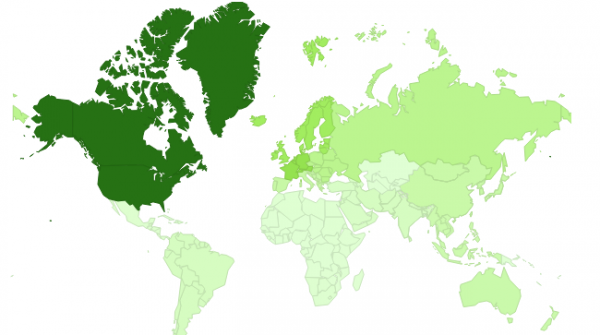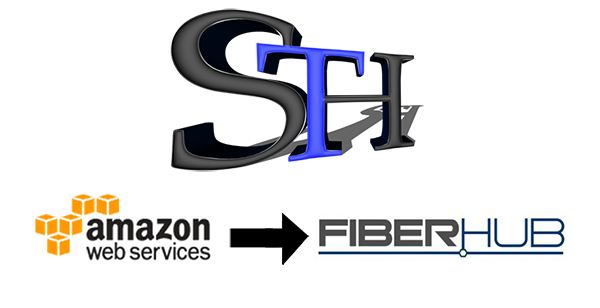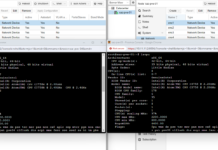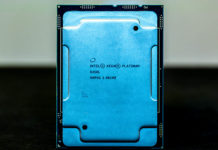Over the past two months (or year depending on how you count) we have been actively looking to move ServeTheHome from the Amazon EC2 cloud to a colocation environment. The original move from VPS hosting to the Amazon EC2 cloud was driven by the hype that the cloud was the most cost efficient. Over time, we found that this is not necessarily the case. Also, this site focuses on server hardware and applications that run on that hardware. Many of the site’s readers work in IT and there is a sizable contingent that works in the hosting infrastructure business. As a result, the notion of getting our hands dirty and building servers sounded like more fun than bother. Today we are announcing our decision, and the details as to why we chose the colocation provider that we did. Hopefully this helps others in their decision making process.
Context for the Move from Amazon EC2 Cloud to Colocation
To get some context for the overall decision making process, the Falling From the Sky series of articles on ServeTheHome.com details how we arrived at the decision to colocate. Suffice to say, there was a lot more behind the colocation decision but here is an index to that decision making series.
- Falling From the Sky – Why STH is Leaving the Cloud focused on the decision to look at other hosting options
- Falling From the Sky Part 2 – Requirements Driving Cloud Departure discussed the actual requirements that different hosting solutions would be vetted against
- Falling From the Sky Part 3 – Evaluating Amazon EC2, VPS, Dedicated and Colocation Options performed a cost comparison of the different hosting options. Of course, a few days later Amazon EC2 cloud pricing was lowered so we updated the cost analysis.
The decision to move from the ease of the Amazon EC2 cloud to our own colocation infrastructure was not taken lightly and did cause many sleepless nights. The next decision was to pick a colocation provider. While there are many colocation options which may be a good thing, the flip side is that it does give many dimensions to analyze in the decision making process. Luckily, the requirements helped narrow down providers.
From Many Colocation Providers to the Short List
Living in the bay area, California, Hurricane Electric is a well known colo provider in the area. That was probably the first choice in terms of convenience. Sadly, while their 2A with 8U and 100mbps offering sounded promising at first, requirements dictated at least 5A of power at 120V. The quote for that amount of power required leasing a full cabinet and was upwards of $600/mo. Too much for this project. Since the entire infrastructure, including spares would fit in 8U, this seemed to be a bit much. HE.net also has many resellers willing to sell parts of their full cabinets, but everything was call for quote pricing. As a reseller of a common commodity, there was not going to be much differentiation here and the prospect of calling multiple sites seemed daunting. There are many other good providers in the Silicon Valley, but it is a very high-cost place to host. Land is expensive, power is expensive, costs for employees is sky high and etc. It was time to take a broader look.
We then turned to a geographic breakdown to validate the decision to look primarily in the USA for colocation so that the scope did not get too broad. Here is ServeTheHome’s geographic breakdown by sub-continent for the last two million visits to the site.

As one can see, there is still a fairly strong concentration of visitors in North America, followed by European regions and Asian/ ANZ regions. From a heat map perspective, it seemed reasonable to focus on North American and US colocation providers. We also compared this against the Natural Disaster Threat Map to at least look for colocation areas with lower natural disaster risk.
The first cut was to look for providers that could house our requirements for under $250/ month. Since we have the up-front cost of servers, and the original colocation budget was $50/ month, this seemed like a fair amount. It should be pointed out that many hosting companies came forward offering free colocation in exchange for advertising, however we did want to maintain the integrity of the process. Through much research and contact with the companies there were two standouts through the selection analysis: Dacentec in Lenoir, North Carolina and Fiberhub in Las Vegas, Nevada.
Dacentec
Dacentec is located in Lenoir, North Carolina. For those that do not know, that region is well known for extremely inexpensive power. There are quite a few very large datacenters in the area for major Internet properties. The Dacentec folks were all very responsive and were great to work with and remote hands help seemed to be some of the lowest anywhere. Here is Dacentec’s 1/4 cab colocation offering:
- 1/4 rackspace or 9U
- 5 Amps / 120V
- 100 Mbps bandwidth on 1 Gig port
- 5 IPv4 adresses
- Free IP KVM loan on request
- Free racking and installation.
- Free reboots and hot-swap drive changes
One note here is that Dacentec did not provide its own metered PDU which needed to be added for a few hundred dollars (or leased for $55/ month.) We needed additional IP addresses (~20) and two network ports for redundancy. Not including the PDU, the cost was $194/ month. Dacentec also allows for month-to-month contracts a standout feature. One drawback was that the 1/4 cabinet offering was not its own locked unit which started at the 1/2 cabinet sizing.
Fiberhub
Fiberhub‘s Las Vegas, Nevada team was also excellent to work with and did answer quite a few of our questions. Fiberhub owns and operates their datacenter just next to the McCarren airport and its electric grid. Here is Fiberhub’s 1/4 cab colocation offering:
- 10U Private Locking 1/4 Colo Cabinet
- 5A / 120V Power w/ UPS + Gen Backup (0.5kW net usable)
- Metered PDU Power Strip w/ 10 Equipment Outlets
- 30 Days FREE unlimited server rack/stack
- 256 IP addresses (/24) included (justification required)
- 1 year minimum term
- 50mbps
A second network drop is priced at $25/month bringing the total to $225/ month. Fiberhub offered annual contracts but did offer a locking cabinet which was a major plus.
From Two to Fiberhub
Although it was a very close race, Fiberhub was the answer. It should be mentioned that Dacentec came in a very close second and there is a good chance that one day STH east will be colocated there. Both companies came highly recommended from several sources however Fiberhub was mentioned quite often by those who are part of the ServeTheHome community. Over the period of two weeks at least four customers in the ServeTheHome community were discovered. The Fiberhub folks apparently count themselves among the STH readership and have used the site’s reviews in their own hardware evaluation. Although Fiberhub offered half of the bandwidth of Dacentec, it did offer slightly more space and more IP addresses. Flights from the bay area to Las Vegas are plentiful to say the least and it is easy to get to from most of North America due to the location being known as a tourist destination. The first visit to Fiberhub’s colocation site will be this weekend. Stay tuned for installation details and documentation! For those wondering, the plan is to have Rack911 perform the configuration and migration. Very highly recommended as they have worked on the site out on numerous occasions and done a great job. Rack911 also has been a patient and helpful partner in the entire selection process.
For the most up to date migration information, feel free to join the forums and participate in the forum thread.





Patrick, great series and thank you for your work.
“the notion of getting our hands dirty and building servers sounded like more fun than bother.”
I sometimes wonder if I and all the great people in the STH forums, were the only ones who think it is fun to build a server or manage systems.
It’s funny that Patrick and Victor both mention “the notion of getting our hands dirty and building servers sounded like more fun than bother.”
I said almost the same thing to Patrick just the other day.
I enjoy building servers and managing systems, and I think that it takes a certain breed to do so.
This is a great series indeed.
Thanks for the feedback! I couldn’t find a really good in-depth process for this. Certainly defining the process a bit as I go.
My hope, like when STH started, is that this turns into a resource for folks facing the same challenge and are looking for information.
Two more pieces (at minimum):
1. The actual colocation and build out of the 1/4 cab.
2. The hardware components and selection since I did something totally different than I had planned.
Open to cover other aspects if there is feedback for more.
i know this is an old post, but i’m curious if you checked out Cobalt Data Center. checked them out during inaugural Veeamon; who we decided to go with this past year.